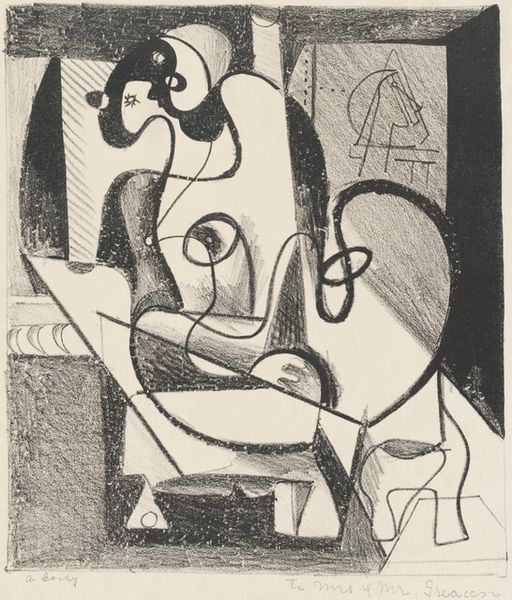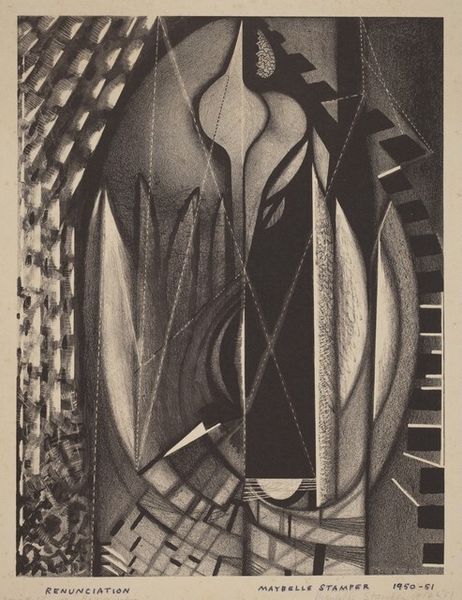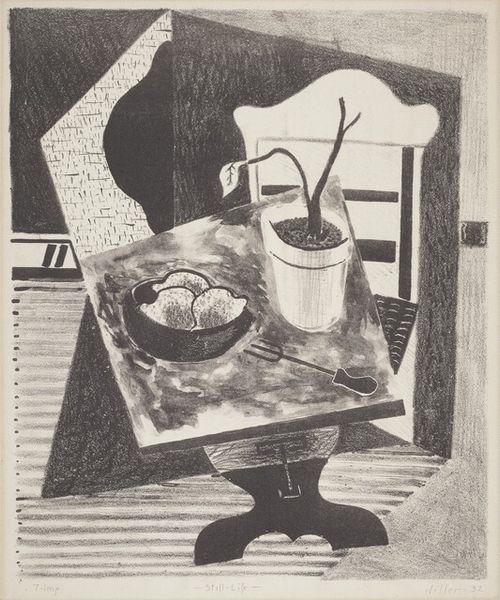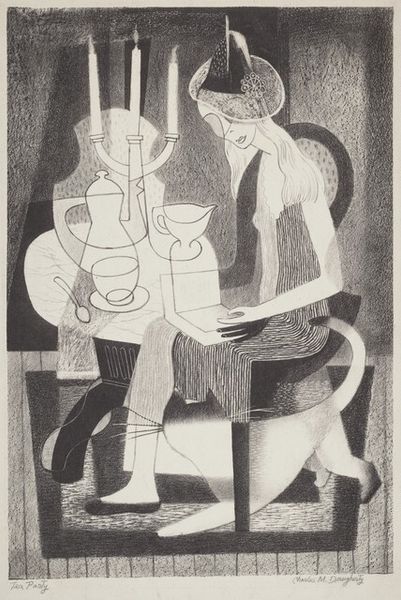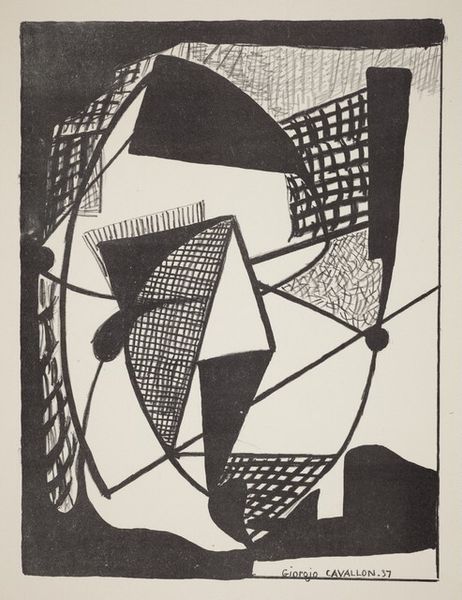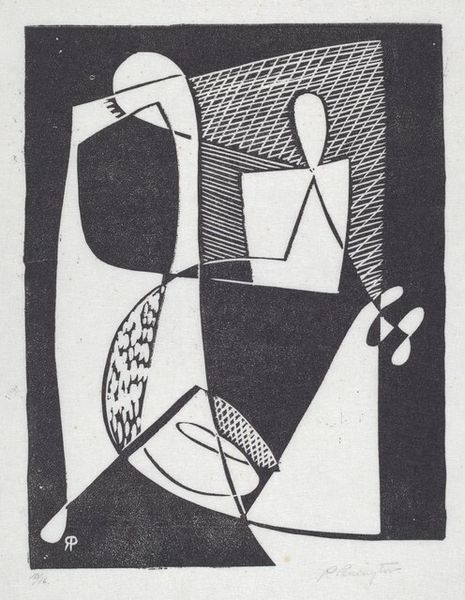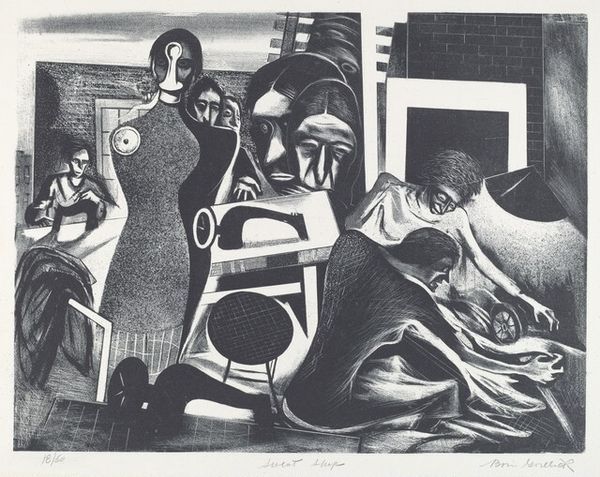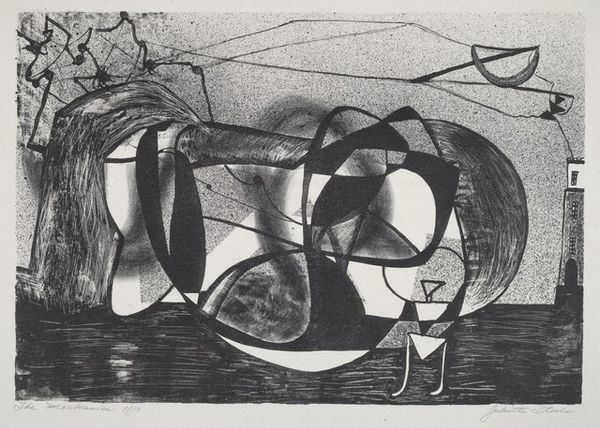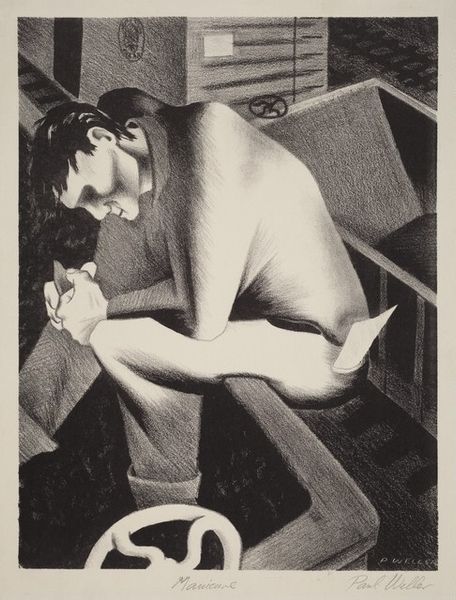
drawing, print, graphite
#
pencil drawn
#
drawing
# print
#
pencil sketch
#
old engraving style
#
figuration
#
form
#
geometric
#
line
#
graphite
#
modernism
Dimensions: Image: 294 x 190 mm Sheet: 436 x 288 mm
Copyright: National Gallery of Art: CC0 1.0
Curator: Welcome. Today we’re looking at “Cat with Fish,” a graphite drawing and print made around 1960 by Charles Michael Daugherty. It presents a cubist-influenced still life rendered with meticulous detail in graphite. Editor: It's stark, isn't it? All blacks, whites, and grays, tightly rendered geometric shapes that hint at… well, at a cat and a fish, but mostly create an almost unsettling feeling. It makes me think about how the artist felt making the work. Curator: Daugherty exhibited widely, especially across the Southern US. He gained recognition for his prints and drawings, demonstrating that he actively participated in the American art scene during the mid-20th century. Consider the art market; prints made art more accessible. This reflects a shift in artistic consumption and the democratization of art in American society. Editor: Absolutely. And beyond mere consumption, I see commentary. Look at how the fish, the consumed, is centered, framed almost lovingly within circles, whereas the cat feels fragmented. Could this be Daugherty's subtle nudge at the predator/prey dynamic, the power structures inherent not just in nature, but reflected in the cultural consumption you mention? The window suggests the domesticity of this kind of violence. Curator: Interesting angle. His engagement with modernist styles places him within a broader artistic discourse focused on formal experimentation. What strikes me is how the stylistic tension communicates a rapidly changing America—with stark and visible contrasts. It shows social fragmentation with abstracted yet recognizable forms. Editor: And don't ignore how the composition isolates each element. Cat, fish, bowl, even the window, existing within the same picture yet emotionally distant. Each is a vignette, creating the unsettling experience you identify with fragmentation. Curator: The graphic quality reminds us that this was also an era of burgeoning mass media. Such forms suggest mass print publication and influence of mass communication. Editor: Ultimately, this forces us to examine what we consider "natural" hierarchies and aesthetics within this "cat and fish" power dynamic. Curator: Well, it highlights the cultural complexities inherent to post-war American identity, then and now. Editor: Food for thought and reevaluation. Literally.
Comments
No comments
Be the first to comment and join the conversation on the ultimate creative platform.

